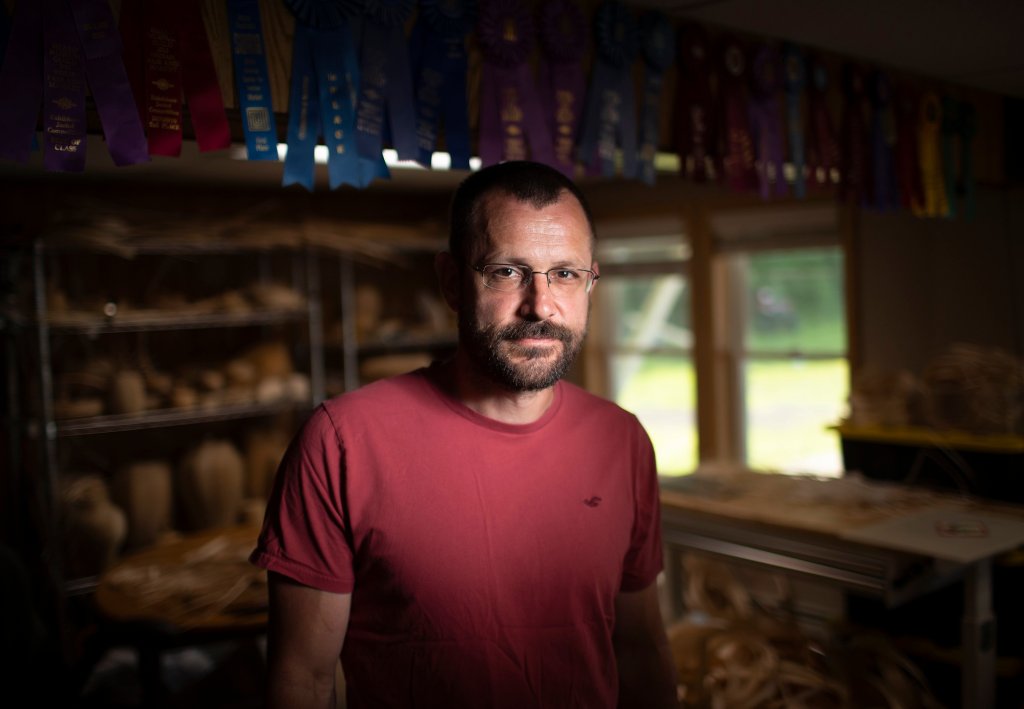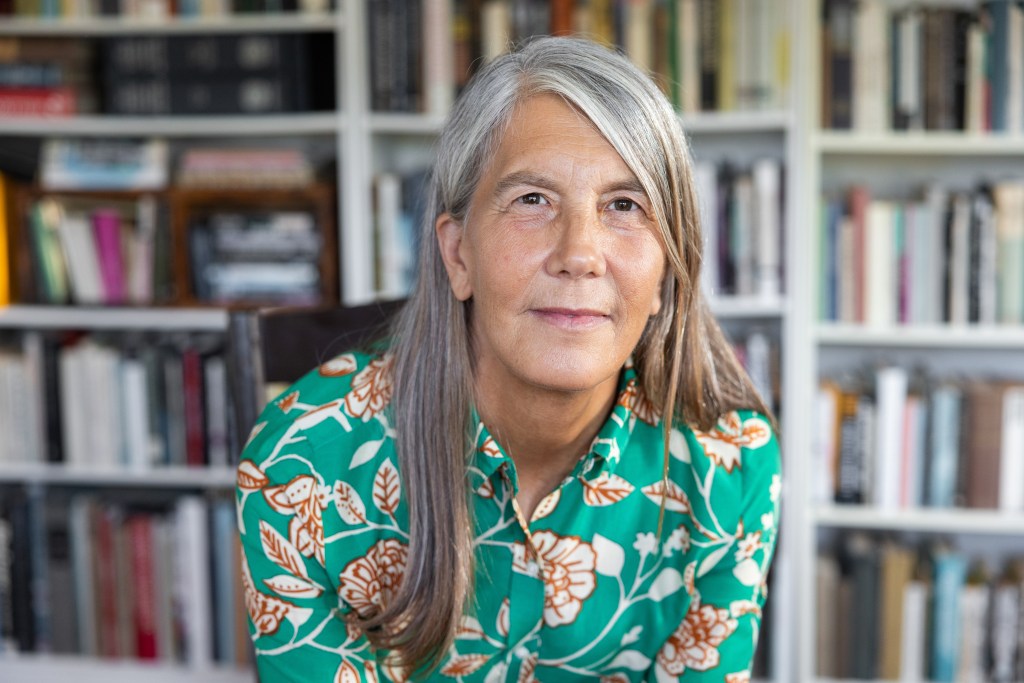

Two Mainers were among a class of 22 “exceptional, creative, and inspiring people” named MacArthur Fellows Wednesday, an honor often referred to as a “Genius Grant.”
Artist Jeremy Frey, a Passamaquoddy weaver based in Eddington, and Margaret Wickens Pearce, a Rockland-based cartographer who creates maps that foreground Indigenous understanding of place, were both named as fellows by the MacArthur Foundation.
The award comes with an unrestricted grant of $800,000.
Frey, 46, grew up on the Passamaquoddy Reservation at Motahkomikuk (Indian Township) and has taken the Wabanaki practice of basketmaking — an artful, yet practical tradition — and launched it into the world of fine art.
Basketry was considered a woodland craft when he got into it over 20 years ago, Frey said in an interview Wednesday. Today, he sells his work at contemporary art galleries around the world.
“This is the culmination of that,” Frey said of the award. “This is the thing I was never actually going to get.”
He has been recognized for pushing the bounds of the form with both his choice of materials, such as the novel decision to appoint baskets with dyed porcupine quills, and his technical prowess.
“He is incredible,” said Richard Silliboy, a Mi’kmaq elder and renowned basketmaker. “We taught his mother back in the early ’90s. She taught her two sons and they just went above and beyond.”
Frey was understandably at a loss for words when the MacArthur Foundation cold-called him about a month ago to inform him of the award.
“I’m just numb,” he said, just after a call with the other 21 recipients. “I know how big this is. But it still doesn’t feel real.”
Frey is unsure just how he’ll spend the money. As brown ash — the material around which Frey has built his entire career — is increasingly threatened by the invasive emerald ash borer, the artist is looking for alternative materials and ways to display his art in larger and more public forums.
He might spend some of the award on the construction of a metal shop, where he could fabricate large steel sculptures of his work that could stand in public spaces and weather the natural elements.
“The money is amazing and it is going to change a lot of things,” Frey said. “But I’m really just curious to see if I can get more people viewing my work, more people seeing what I’m doing.”
A retrospective of Frey’s work is on display at the Bruce Museum in Greenwich, Connecticut, through Oct. 26. The show was originally curated by the Portland Museum of Art.
Pearce, 60, is a member of the Citizen Potawatomi Nation. Through collaboration with Indigenous communities, her work blends archival materials and other forms of historical knowledge to create maps that center Indigenous understandings of land and place.
In a time when funding opportunities for arts and the humanities are under threat, “these funds are so precious,” Pearce said in an interview Wednesday.
Her work includes a four-year collaboration with Penobscot members of the nation’s Cultural and Historic Preservation Department that produced Iyoka Eli-Wihtamakw Kǝtahkinawal — “This Is How We Name Our Lands.” The 44-by-66-inch map is a Penobscot guide to the place names of the nation’s homelands.
Through cartography, Pearce said she makes space for people to listen. Unlike a written narrative which is digested in a linear fashion, page by page, cartography lays everything out at once, lending to it what Pearce described as a “ruminative capacity.”
“We are living in a time of censorship of public history and science,” Pearce said. “The work of truth-telling in public spaces is really critical and must continue despite that censorship.”
Her latest work, a two-map set of Inuit homelands in Canada, will be released by the Canadian-American Center at the University of Maine later this year.
Since 1981, 1,175 people have been awarded coveted Genius grants.
“At the heart of the MacArthur Fellows Program is its aim to identify extraordinarily creative individuals with a track record of excellence in a field of scholarship or area of practice, who demonstrate the ability to impact society in significant and beneficial ways through their pioneering work or the rigor of their contributions,” the foundation states on its website.
Two Mainers have received the award previously: fisherman and marine conservation specialist Ted Ames, who was named a fellow in 2005, and Mary Bonauto, a Portland lawyer and national leader on same-sex marriage, who received a grant in 2014.
Nominees’ names are submitted to a selection committee composed of “a rotating roster of leaders in the arts, sciences and humanities professions, and in the for-profit and nonprofit communities.”
Reuben M. Schafir is a Report for America corps member who writes about Indigenous communities for the Portland Press Herald.

We invite you to add your comments. We encourage a thoughtful exchange of ideas and information on this website. By joining the conversation, you are agreeing to our commenting policy and terms of use. More information is found on our FAQs. You can modify your screen name here.
Comments are managed by our staff during regular business hours Monday through Friday as well as limited hours on Saturday and Sunday. Comments held for moderation outside of those hours may take longer to approve.
Join the Conversation
Please sign into your CentralMaine.com account to participate in conversations below. If you do not have an account, you can register or subscribe. Questions? Please see our FAQs.